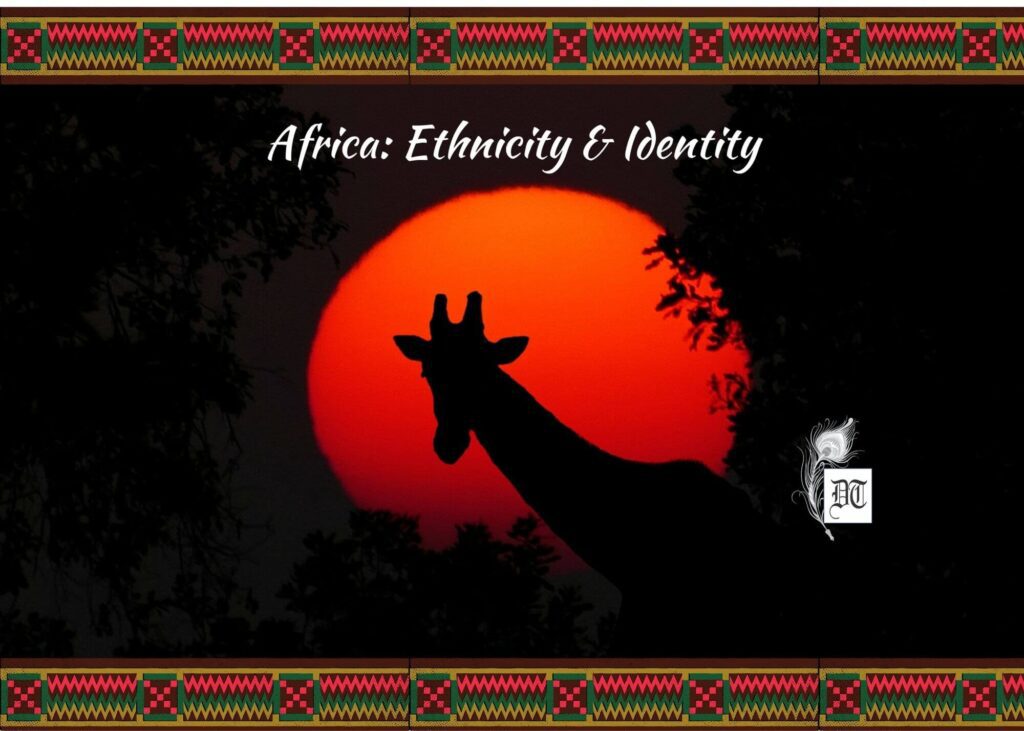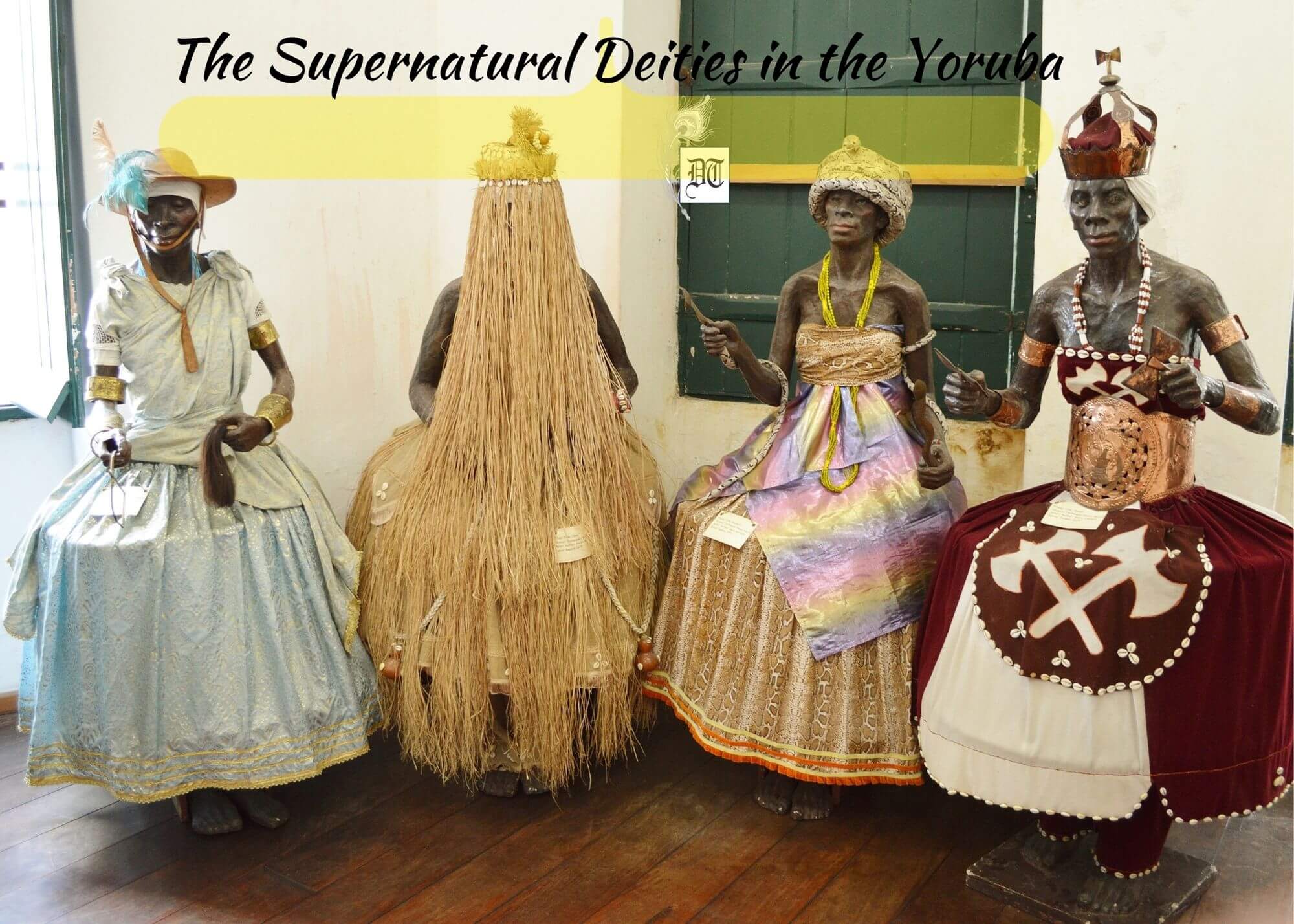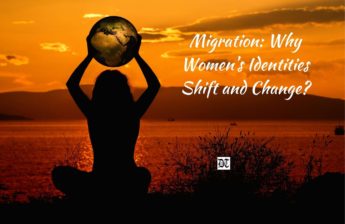Reading Time: 3 minutes
Swati discusses the Orishas, the supernatural spirits and central characters of several African and African diasporic faiths– exclusively for Different Truths.

“Mama used to say that in the beginning, white hair was a sign of the powers of heaven and earth. It held beauty and virtue and love; it meant we were blessed by the gods above.”
― Tomi Adeyemi, Children of Blood and Bone
There are five levels in cosmology: Orisha worshipers believe in a creator who is called Olodumare or Olorun (God), the Orishas, human beings, human ancestors, and the lowest group, plants and animals.
Orishas are the supernatural spirits and key figures of several religions in Africa and of the African diaspora that derive from it, such as Cuban, Dominican and Puerto Rican Santería and Brazilian Candomblé.
In Yoruba religion, it is believed that the Orishas are spirits sent by the supreme creator, Olodumare, to assist humanity and teach them to succeed on Ayé (Earth). Rooted in the native religion of the Yoruba people, most Orishas are said to have previously existed in òrún – the spirit world – and then became Irúnmọlẹ̀ – spirits or divine beings incarnated as a human on Earth.
Practitioners traditionally believe daily life depends on proper alignment and knowledge of one’s Orí…
Practitioners traditionally believe daily life depends on proper alignment and knowledge of one’s Orí, which means the head. Still, in spiritual matters, it means a portion of the soul that determines personal destiny. Yoruba tradition often says that there are 400 + 1 orishas associated with a sacred number. Other sources suggest that the number is “as many as you can think of, plus one more – an innumerable number.”
Some Orishas are rooted in ancestor worship; warriors, kings, and founders of cities were celebrated after death and joined the pantheon of Yoruba deities, while others are based on historical figures are confined to worship in their families or towns of origin; others are venerated across more expansive geographic areas.
Yemonja is a Yoruban deity celebrated as the giver of life and the metaphysical mother of all orisha (deities) within the Yoruba spiritual pantheon. She is the orisha of the Ogun River, the largest river within the territory of Yorubaland, and the counterpart of Olokun, who represents the unknown bottom of the sea.
Yemonja has been likened to amniotic fluid because she protects her children against a predatory world.
Yemonja has been likened to amniotic fluid because she protects her children against a predatory world. She is the Orisha of fertility. She is associated with the fish-gill facial markings worn by the lyawo (initiate into the priesthood). She is said to have assisted Sango in ending the practice of twin infanticide in Nigeria. Her animal totems are the duck, the vulture, the snake, and the tiny snail; her sacrificial animals are the ram, the lamb, the duck, the rooster, the goat, the fish, and the pigeon.
She is represented in her various African shrines by sacred stones, known as ota, placed in river water in a calabash. Seven belong to her, meaning the seven seas; her devotees wear seven silver bracelets, and she is often seen wearing full skirts with seven blue-and-white layers.
Obatalá is the kindly father of all the orishas and all humanity. He is also the owner of all heads and the mind. Obatalá is the oldest “orisha funfun” (“white deity”), referring to purity, both physically and symbolically, as in the “light” of consciousness.
In Yoruba mythology, Obatalá was tasked to create the Earth but failed by being drunk on palm wine …
In Yoruba mythology, Obatalá was tasked to create the Earth but failed by being drunk on palm wine and was outshined by his little brother Oduduwa. As punishment for his negligence in an important task, he was given the job of creating human beings.
In terms of offering to orishas, Female orishas (Iabás) “eat” female animals, while male Orishas (Borós) “eat” male animals. However, Obatala is the only male orisha who “eats” in the Iabás circle, thus accepting sacrifices of female animals in his honour. Unlike other Orisha, Obatala only takes offerings cooked in honey, as he has a distaste for dende oil.
Like any other Orisha, Obatala does not specifically eat the offering himself but consumes the energy of the offering or Axé. The expression “eat” is used as a symbol for a spiritual form of feeding. Orishas do not “come down” from the spiritual plain to eat (literally speaking) the animal being offered.
Traditionally, for sacrificial offerings to Obatala, considered an Orixá-funfun (literally “white Orisha”), the animals or their parts should be completely white, such as the white blood of the mollusk called Igbin.
There is much diversity in the social and political organisation among the Yoruba…
There is much diversity in the social and political organisation among the Yoruba, but they share many essential features. Many Yoruba are now Christians or Muslims, but aspects of their traditional religion survive. Despite the ascendance of other religions, many Yoruba and other West Africans still turn to the orishas for help, aid, and advice in life’s significant and minor problems.
Picture design by Anumita Roy















